“Father…where do babies come from?” My angelic, inquisitive son asked me in a cuddly British accent, with a devious gleam in his baby-brown eyes. To which I hastily replied, “I don’t know”, go ask your mother!” I thought for sure that I was out of the land of uncomfortable questions, until he hit me with the next inquiry. I could see that his mind was working overtime. He turned his glance over to the new resident taking up some huge real estate in our living room. It was a shimmering, shiny, silver box with globes of glowing tube thingies rising out of the top of it… pointing upwards towards the heavens. It was my newly acquired Lampizator Big 7 review unit.
“Father…where do DACs come from and what do they do?” Oh boy, a two-part question! But I know this one. “Well my son”, I eagerly replied. “The answer is really quite simple. They come from the DAC factory. Very simply, a DAC is a circuit that converts digital measures of audio amplitude in discrete steps into a continuous analog electrical equivalent of the sound to recreate a copy of the analog signal originally recorded in the music studio”. He looked over at me with impending impatience. “I already knew that” he answered precociously. “But, what does it actually do?” “Well”, I retorted. “You know how you take your favorite songs on your big boy computer and download them onto your Nano? Well, the Nano, also has a dac inside which takes on the responsibility of converting the digital files into the analog waveforms that you hear on your headphones!” I could see he was starting to understand, but he still wasn’t finished. “But…how do they fit that big shiny thing that you have, into my little music pod. And… how can it possibly do the same thing”? Now, we were getting somewhere! My little boy was growing up. (He is actually 18, by the way, and grew up in Long Island, NY…but somehow, little boys asking in cute British accents always seem to get everyone’s attention (:->). Hopefully, I have yours.
All digital music players must be able to convert digital signals to analog ones somewhere in the chain, before it becomes amplified and ultimately becomes the music that we hear on our headphones or speakers. However, how well that conversion is accomplished is just as important as any other component’s job in the music-making chain. Our computers have always used RAM chips to store temporary digital memory. Up until recently, the CD and DVD were the physical media of choice to house our digital music. CD players would take on the task of retrieving the digital information from the discs, electronically drive it through it’s own internal dac, and then send the converted analog signals on their happy way to various type of amplification. Our perpetual thirst for higher resolution recordings prompted the recording industry to enhance recordings on CDs, first to 20-bit HDCD, then to 24-bit re-masters.
Sony and Phillips changed our world with a 1-bitstream hi-rez recording method, which they named, the Super Audio CD (SACD). The DSD format works with only a single bit of depth by having a sampling rate of 2.8224 MHz, versus the normal redbook rated 44.1 kHz (and 16-bits) for CD. Sony initially created the DSD format, when they purchased Columbia and inherited their music archives. Sony needed a way to store and preserve tons of their newly acquired classic Columbia recordings, which were falling prey to tape degradation over time. DSD was created as a way to copy everything quickly and effectively. Sometime around the mid-2000’s, consumer dacs were starting to take independent form and were earning a place in common audiophile’s setups. This afforded the end-user the ability to extract the music that we already had, and make it sound even better than the onboard dac that was included in mid-priced to higher echelon CD players.
Then, in the late 2000’s, with the advent of “computer-as-source”, music lovers were able to store music on their desktop or laptop’s hard drive. Through the use of a USB output, and a good music player interface, we could use the computer just as a transport, attach an external dac of our choice, add amplification, and have the equivalent of a very expensive home audio system at our fingertips. The possibilities seemed endless. This period of time changed the way we listened to music, as we knew it. Eventually, as memory became cheaper, and computers became thinner, the CD-ROM drive started trending the way of the dinosaur. RAM memory started offering us more opportunities. A Random Access Memory (RAM) chip contains a miniaturized collection of thousands of components, created on a tiny chip of silicon about the size of a pinkie nail larger than Tatoo’s from Fantasy Island, but smaller than Shaquille O’Neal’s. Just take a small moment to really contemplate the technology of how one thousand songs can be stored on something that is that small. Never take that for granted…life is precious. I always tell my family to “never cross over a bridge, without checking out the view”. But I digress….
So, it’s a dac’s job to take all that digital information and turn into something useful. A dac in your DAP, your phone, or one in a dedicated unit, all do the same thing. It takes the digital 0’s and 1’s stored in strings of bytes (8 bits to a byte), which, when interpolated by software and driven through hardware, turns into information we can understand. In this case, the music that affects our everyday lives. But how it does it, how accurately it does it, and how proficiently it does it, is the difference between being “just” a dac, and being a dac that is in contention to be one of the best sounding ones in the world. To put this in perspective, you can be considered a cook if you can whip up a really mean, grilled cheese sandwich. But…can that cook be put in the same category as a master chef who showcases his skills perfecting Steak Tartare for the most discerning clientele at the Four Seasons Restaurant at the Beverly Wilshire Hotel? Not likely.
The Digital to Analog Converter that forever changed my life:
I’ve been listening to the finest recordings that I could get my hands on, for most of my life. If it sounded good, I listened to it, even though it wasn’t really my style. Donna Summers, “MacArthur Park” comes to mind. So does Michael Jackson’s, “Beat It”. Not really my cup of Chai, but if it made my speakers rock, and rock cleanly, I lusted after it. I have been on a lifelong quest to find the best, cleanest, most talented recordings. I have spent countless hours evaluating the best of the best albums, and a bottomless bucket of numerous dollars, buying and selling equipment to reach the highest mountaintop of audio Eden. I am a true audiophile. But nothing…I mean nothing, has ever improved my music, and made it sound like the Lampizat0r Big 7 does.
The Lampi Level 4 comes close, but nothing touches the sound produced from the Big 7. I can now say that I’ve been on the highest mountaintop, looked down, and cried, because this peak is only a temporary space that I can occupy. By the time you read this, I will be back down on earth, living once again with the common-folk. But you can bet that I am going to do everything that I can to maximize this ride. I’ll sleep when I die. This month is for basking in Lampizat0r excellence.
Now, one might realize that Lampi dacs aren’t the prettiest girls on the block. But they are the ones that when you marry them, will offer you a lifetime of security, love and devotion, every time you hit “play”. When an audiophile spends money on audio components, we strive to achieve two things, to get something that sounds great, and to get something that looks great so we can achieve the highest SAF (spousal acceptance factor) that won’t get it relegated to the basement rig. The Lampizat0r Big 7 and even the review sample Level 4 that I used in my previous Wells Audio review are rectangular metal boxes that don’t offer a lot of sex appeal. They will not make your audiophile friends jealous, or make them drool. Think of the Lampi as the girl that your mother told you to look for, the one with a nice personality, and is truly beautiful on the inside. She is the farm girl down the road who has all the right parts. She is a hopelessly loyal lifetime companion with whom you’ve found true happiness. She will support you through good times and the bad. That’s what the Lampi is and you will have a big family with her, and she will musically pleasure you for a lifetime.
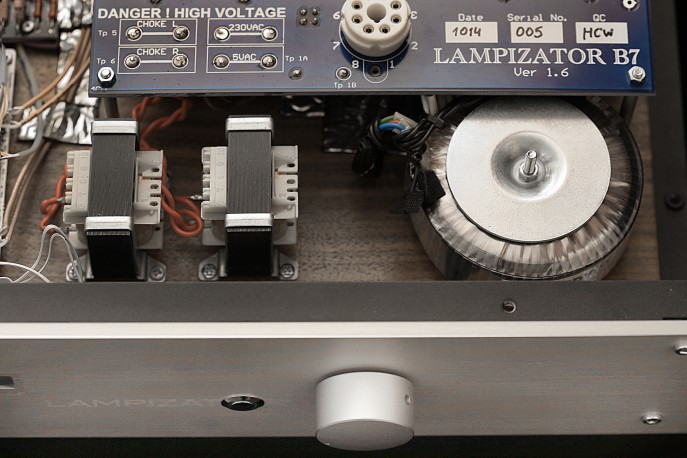
R2R vs. Delta Sigma (Dacs for Dummies):
When it comes to dac technology, there are two different approaches to converting the digital signal to analog. And as with many things audio, there are two opposing camps, pitching their tents, fighting to the death that their choice is better than the other. Both technologies have their pros and cons.
The Delta Sigma approach:
With a Delta-sigma dac, modulation is a DSP (digital signal processing) method. It transfers high-resolution digital signals into lower resolution ones, in order to convert the digital signals to analog. A DAC works by reading the digital data in a file and attempts to recreate a copy of the original analog signal recorded. The reason that it is called Delta-Sigma is because it has a measured change from one state to another one, known as Delta, which goes through an accumulator, known as a Sigma. If the state of the accumulator is greater than 0, it provides a positive swing, if not, the signal gets a negative swing. This is what creates the sine wave in what we know as an analog waveform. Of course, this explanation is in the simplest terms.
Here is an illustration that I “borrowed” from Wikipedia:

In the simplest “Black box” terms:

The R2R Approach:
Using a totally different methodology, as opposed to using filters, accumulators and integrators, amongst other components, an R2R dac uses a resistor ladder network, which directly converts digital signal into an analog voltage. An R-2R resistor ladder network usually uses 2 sets of resistors…R and 2R. This takes the input digital signal, and creates a voltage, which becomes the output analog signal.

One is not the loneliest number:
The Big 7 is a one-box unit as opposed to the previous Level 7, which consisted of 2 separate units. Lampizat0r found that they could make more improvements to their sound signature by utilizing a one-box approach. The grounding path is shorter to deter noise from getting in the circuit, and power delivery is more immediate from its 20 power supplies. This box also affords the ability to use a larger rectifier tube. The Big 7 uses either the finest Dueland Cast Cu or Jupiter Copper Wax capacitors. The PCM DAC reaches up to 384 kHz. USB input can handle up to 32 bit/384 kHz. The Big 7 is Lampizat0r’s flagship dac so it comes as a one-price option. There are only 2 upgrades, and those are to include either a DSD engine, and/or a volume control. The only reason that I would require a volume control is if I wanted to connect it up directly into a power amp.
This eliminates the need for a preamp in your system, but I have both a pre, and a headphone amplifier, so I wouldn’t choose the volume control upgrade. I would, however, desire the DSD engine because I have an extensive DSD digital file collection. Lampi’s DSD conversion is unique, which is why it sounds so darn good. They unearthed a way to use an un-manipulated, filtered, raw native datastream as the signal. The dac is directly tied into the tube module, so uniquely, there is nothing in the signal path. Only one capacitor is used in series with the sound in this dac. And this Lampi model uses one of the world’s best capacitors. There is a selector switch on the back panel to chose between two different tube schemes. One tube compliment comes with the purchase. Tube rolling and finding synergy with your own system, is an art of it’s own. The thrill of the chase is half the fun.
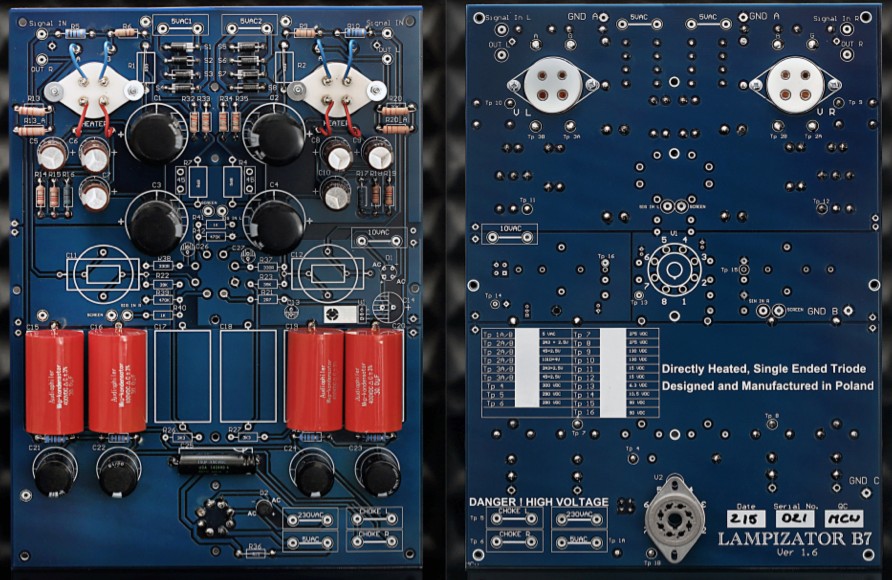
Disregard everything I just said about dacs:
Now that I taught you everything there is to know about dacs…before you rush out and start building one of your very own, I must confess to you that this Lampizat0r Big 7, and Lampi’s other models from the Level 4 up, do not use any of these conventional technologies. And that is why these dacs sound so wholesome. I am talking about a dac that puts out sound that is warm, organic and naturally engaging. The sound reaches out and portrays the music like a generous summer breeze, on a calm clear night. You can almost smell the freshness in the sound. There is no brash, etched harshness. There is no hint of sibilance or digital glare. The music enters your ears and heads directly towards your soul. It has a personality filled with deep recesses of musicality unlike anything I’ve ever heard before. I stop to catch my breath, and move over to parallel setup with the same source, same music, and same cabling to make sure I am not losing my objectivity. The Lampi paints a portrait on a canvas that has so many nooks and crannies, each one filled with gobs of good, clean, involving sound. It makes you feel satiated. This is why a music lover gets started in the hobby in the first place.
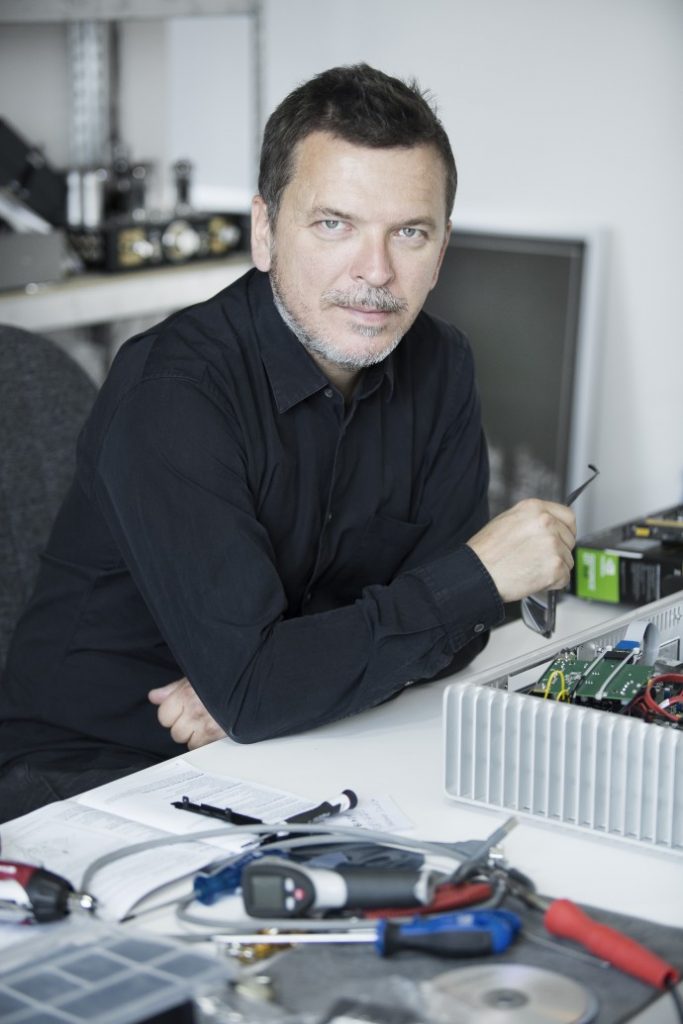
Who, what where and when:
Lampizat0r is the brainchild of Lukasz Fikus, who resides in Warsaw, Poland. Here he designs and builds each unit for a highly discerning clientele. His distributor in North America is Fred Ainsley, aka Gopher on Head-Fi. Fred is a gentleman and a scholar, whom I’ve known for over a decade. He is honest, cares about his customer’s best interests, and easy to talk to. If you are in the market for a dac, I feel you would be remiss to buy one without at least talking to Fred at some point in your travels. “Lampa” in Polish means vacuum tube, and “zat0r” completes the name because their products are as efficient and effective as the pop culture icon, “The Terminator”. The “0” in the name mirrors a fisheye that acts as either an on/off switch, or switches the DSD engine on/off, on the faceplate depending on the model.
When you speak with Lukasz, you find that you are talking to a logical, mild-mannered, respectful man, with a modest sense of humor, who utilizes a multitude of comprehensible analogies to help break down the barriers of complicated electronic jargon. I hold a degree in engineering, but there are so many paths that audio topologies can lead you down. It can be a challenge to fully understand all of audio’s circuit-specific genres. When you are looking for directions, Lukasz is the GPS’ voice of reason, which helps you reach your destination, without needing to constantly hear, “When it is safe, please make a U-turn”.
He recognized right away, that I was genuinely interested in his uniquely specific approach to building a superior dac that doesn’t follow conventional protocols. I was the cold, hungry man wandering lost in the woods, and he was the Good Samaritan who opened his home without caution, and offered me food and a warm fire. Instead of just feeding me the fish, he took the time to teach me how to fish.
Lukasz spends all of his brainpower and effort, building dacs that will sound the best one can. If you are not a shallow individual who thinks that looks are more important than sound, then nothing is going to make you happier. The Big 7 is a logically clean, un-cluttered design that contains only what it needs to sound great. It uses the best parts money can buy that make important improvements to the sound. If it is not needed, it isn’t in there. Tubes are used, because they can achieve the power gains and sound signature that Lukasz wants, while adding only two or three components into the signal path. His tube interface is used to reduce the part count. He explained to me that every part that is introduced into the circuit (solder, wire, etc.), affects the sound, generally in a negative manner. Instead of using a circuit with 4 op amps per channel, 40 to 70 transistors plus resistors and capacitors etc., running through to the output that can contain 240 to 320 different parts on a printed circuit board, Lampi uses only four major parts in the signal path. Lukasz designs his circuit, and then starts removing components from the path until the sound collapses, and then he puts back in the last one that was removed and that becomes his design!
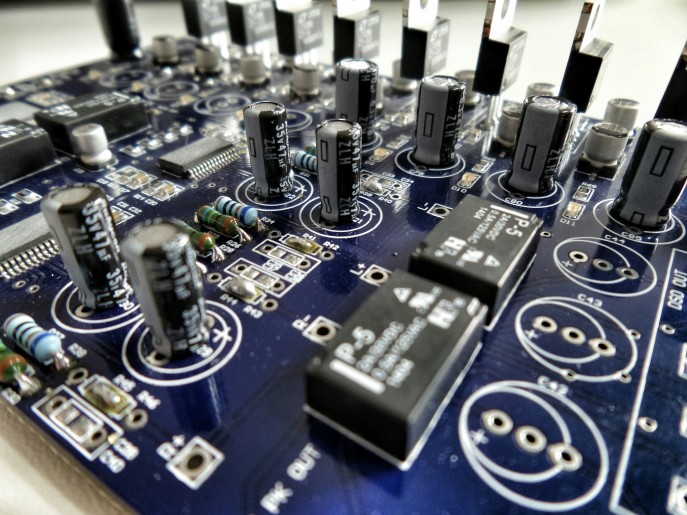
PCM DAC:
The Lampi’s PCM dac tube interface consists of only 4 components in its path. The tube>analog filtering>current/voltage conversion>Philips microchip. The only other things that are added are there to adjust the volume of the signal and the rise time. Lampi prefers to use tubes because they are a simple creation that uses only 2 or 3 components. Lukasz says that his brain functions just like a tube…simple, pure and logical.
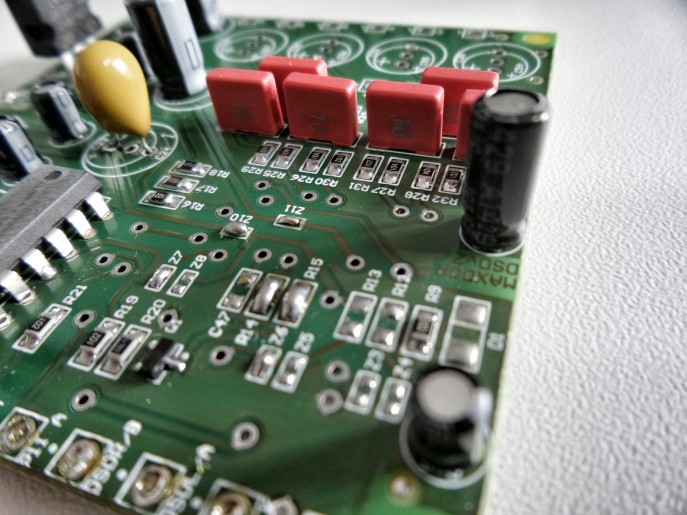
DSD DAC:
The Lampi DSD dac from beginning to end, comprises purely of a built-in USB port, a solid-state digital filter, a passive discrete analog filter, and an active discrete tube filter. Lukasz confidently admits that his design doesn’t manipulate the data at all. There is no conversion, no up or downsampling, and no re-clocking. Cheaper dacs that claim to handle DSD, dumb it down to PCM before it reaches our ears. The only manipulation that Lampizat0r does do to the signal, is remove the carrier frequency from the raw data as it travels from the storage drive. Pure, native DSD equals pure captivating sound. When the old lady from the Wendy’s commercial shouts out “Where’s the beef!” You can tell her, “Here…here’s the beef”.
Listening Impressions:
I find myself challenged to try and describe how the Big 7 sounds. I feel it is a huge injustice and disservice to talk about the soundstage, detail, and dynamics, as if it is a common component. The sound that is generated by this dac is unlike any other audio box that I have ever listened to. It acts like a drug to me. As it says in my signature on Head-Fi.org, “I need a dose of it everyday”. Any day that I went to sleep without a dedicated listening session using the Lampi, was a wasted day in my time spent with it. It was my sleeping pill and my dream catcher. As I listened to each song from my reference piles and digital sources, I constantly felt the need to share the goodness that I was feeling with anyone in close proximity to my 3 meter headphone cord. I would be listening to my DSD version of Ella and Louis– “Isn’t This a Lovely day”, hearing the reverb, grit and gravelly quality in Satchmo’s voice, and the unique raspy, resonance in his muted trumpet solo, and I would lean over to position my HD800’s on my wife’s head. No matter how busy she was, it took less than 5 seconds for a huge smile to engage on her beautiful face.
My son (the one with the fake British accent) would be innocently walking by as I listened to an astonishingly clean version of Black Sabbath – “Warning” from their 1970 self-titled debut album. He could hear Tony Iommi’s sludgy guitar licks leaking out from the open-backed HE1000’s, and he would motion to me to “give dem up”! I felt a cold, empty, lonely chill, as I would hand him my headphones, and wait impatiently in my one-person line to get them back. I knew from this experience, he was starting to understand what I had been constantly preaching to him his whole life, about what it was like to listen to real rock guitar. The way it was supposed to sound.
Through my speaker mains, the Big 7 had another opportunity to bowl me over. To say that the noise floor is quiet is an understatement. It is dead quiet! The separation and pinpoint accuracy of listening to McCoy Tyner’s – “Satin Doll” in a binaural 24/192 re-master, was nothing short of spectacular. I don’t like to sound trite, but “man-oh-man, he was like…right there, dude!” When you listen to a well made binaural Jazz trio recording, like from his “Nights of Ballads and Blues”, it allows you to focus in on the layers of the deep reaches that a quality piano reveals, and cherish each distinctive role of the drum set’s sum of parts. The sound presentation is laid out before you, in an opulent, untainted, beautifully organized array, of natural sounding composition that gives me a serious case of perpetual “just one more-itis”.
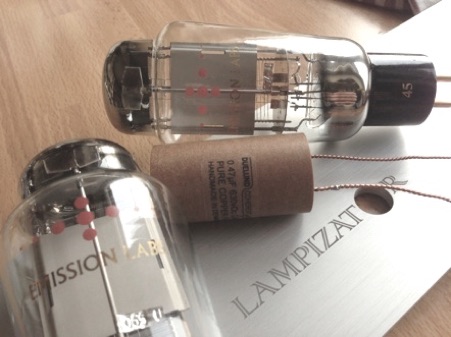
This is the one:
The Lampi takes on the chore of interpreting the digital bits like no other dac. It propels them into the next phase in the chain, with amazing clarity and transparency. It provisions the soundstage with a warm, fluid, satiating series of sounds, with reassuring realism while creating a unique, emotional bond with the listener.
As with all good things, the Big 7 doesn’t come cheap. But if you are a sincere music lover, looking for the best sound that money can buy, then this is the one.
Contact Info:
-Manufacturer’s website – http://www.lampizator.eu
-North America Distributor (Fred Ainsley) – http://www.lampizatorna.com
-Price (as tested) – $10,500 USD
Associated Components:
–Amplification: Wells Audio Enigma Headphone Amp and Cary Cinema 5
–Headphones: Sennheiser HD800 and HiFiMAN HE1000
–Sources: Cary DMC-600SE and McIntosh MacBook Pro
–Cabling: WyWires exclusively (“except DanaCable USB cable”)
–Tubes: Output: Emission Labs EML 45 Mesh or Standard Psvane 101D
~Rectifier: Emission Labs 5u4g














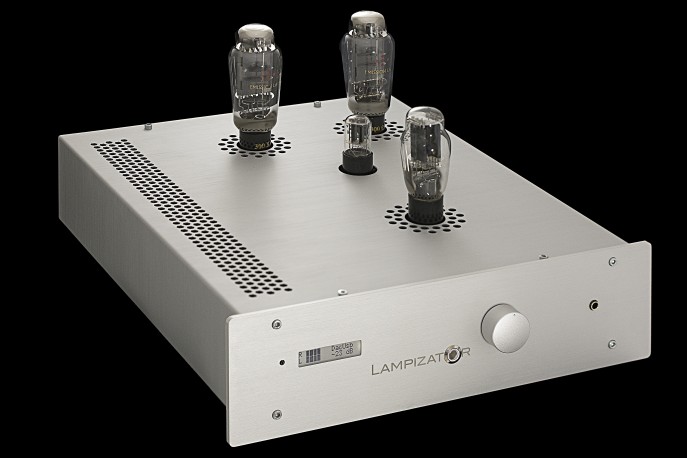
Reply
Want to join discussion?
Feel free to contribute!